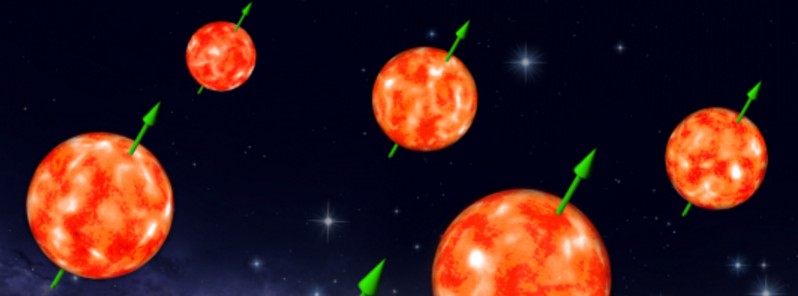Starquakes reveal surprises about the birth of stars

Just as seismologists use earthquakes to understand the interior of our planet, astronomers use starquakes to understand the interior of stars. In one such study, an international team provided unprecedented insights into conditions in the turbulent gas clouds where stars were born.
Stars are believed to be born when massive clouds of gas and dust collapse – a violent process that generates clusters of stars containing up to a thousand stars each.
These star nurseries are extremely difficult to study directly because the gas and dust interfere with most astronomical observations. To get around this problem, the astronomers studied 48 red giant stars in two ancient star clusters – one that formed more than 2 billion years ago and one that formed more than 8 billion years ago. Their analysis involved four years of observations of the stars made by NASA’s Kepler space observatory.
The team used asteroseismology, the study of stellar oscillations, to work out the orientation of the angle of spin of 48 stars in our galaxy, the Milky Way. "The results were unexpected,” says study team member UNSW’s Dr. Dennis Stello.
They found that the spins of most of the stars were aligned with each other, contrary to the previous assumption that massive turbulence would have scrambled the rotational energy of the clouds where the stars were born, and prevented the alignment.
"The benefit of studying ancient star clusters is that the interfering dust and gas has gone, yet the stars still preserve the signature of the initial conditions in the cloud where they were born," says Dr. Stello, of the UNSW School of Physics.
"Our finding that the spins of about 70% of the stars in each cluster are strongly aligned, and not randomly orientated as was expected, tells us that the angular momentum of the gas and dust cloud was efficiently transferred to the new stars.
"It’s remarkable that the imprint of these initial conditions can still be seen billions of years later, by studying tiny oscillations in stars that are many light years away," he says.
The sound of starquakes. Credit: UNSW
Reference:
"Spin alignment of stars in old open clusters" – Enrico Corsaro, Yueh-Ning Lee, Rafael A. García, Patrick Hennebelle, Savita Mathur, Paul G. Beck, Stephane Mathis, Dennis Stello & Jérôme Bouvier – Nature Astronomy – March 13, 2017 – DOI: 10.1038/s41550-017-0064
Featured image: The spins of about 70% of the red giant stars observed in the clusters were strongly aligned. Credit: UNSW

Commenting rules and guidelines
We value the thoughts and opinions of our readers and welcome healthy discussions on our website. In order to maintain a respectful and positive community, we ask that all commenters follow these rules.